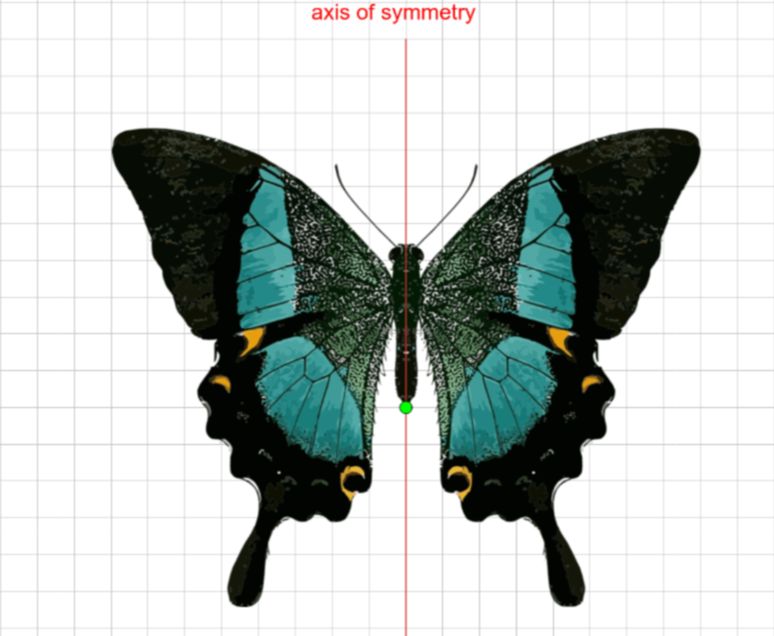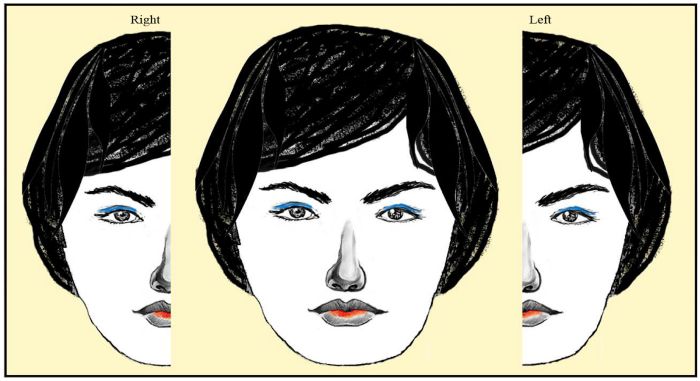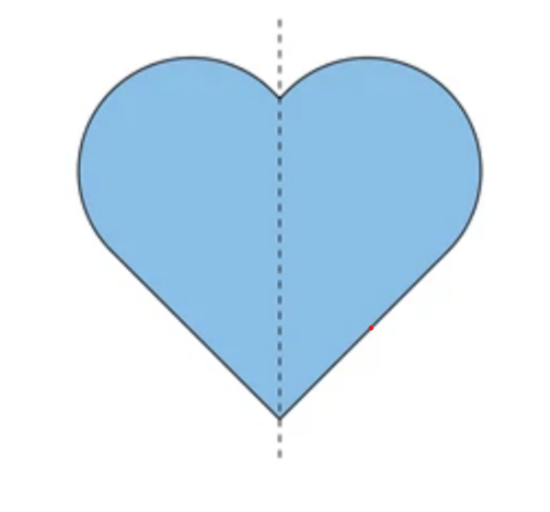Symmetry & Reflections
What is Reflection Symmetry?
Reflection symmetry, also known as mirror symmetry, is a type of symmetry where one half of an object or shape is a mirror image of the other half. Imagine looking at a picture in a mirror – the left side of the image looks exactly like the right side, just flipped over.
In math, when a shape has reflection symmetry, we can fold it along a line (called the "line of symmetry") and the two halves will match perfectly.
Reflection Symmetry Images:
Take a look at the following shapes to understand reflection symmetry better:
-
Butterfly: A butterfly has reflection symmetry. If you fold it along its center, both wings will look the same.

-
Human Face: Your face has a reflection symmetry! If you draw a line down the middle, both halves of your face are mirror images of each other.

-
Heart: A heart shape also has reflection symmetry. Fold the heart along its middle, and the two sides will match exactly.

-
Letter A: The letter “A” has reflection symmetry when divided vertically down the middle.
Real life reflection symmetry:
-
Butterflies: Their wings are exactly the same on both sides.
-
Puzzles: Many puzzle pieces are designed with reflection symmetry to fit together perfectly.
-
Buildings: Some buildings, especially those with large glass windows, may have reflection symmetry in their design.
-
Road Signs: Many road signs, like the triangular yield sign, have reflection symmetry.
-
Animals: Many animals, like fish or starfish, have bodies with reflection symmetry.
What is the Concept of Reflection in Maths?
In mathematics, reflection is a type of transformation that "flips" an object over a line of symmetry. The shape remains the same, just reversed. This is like folding a piece of paper in half, so one side matches the other. The line of symmetry is the imaginary line that divides the object into two equal halves.
Key Terms:
-
Line of Symmetry: The line along which an object can be folded, so both halves are identical.
-
Mirror Image: The flipped version of an object along a line of symmetry.

Interactive Quiz on Reflection Symmetry |
Let's test your understanding with this fun quiz!
1. Which of the following shapes has reflection symmetry?
a) Circle
b) Rectangle
c) Triangle
d) All of the above
2. What is the line that divides an object into two equal halves called?
a) Fold Line
b) Line of Symmetry
c) Mirror Line
d) Center Line
3. True or False: The letter “B” has reflection symmetry.
a) True
b) False
4. If you fold a piece of paper along the middle of a butterfly's wings, what will happen?
a) The two wings will not match.
b) The two wings will match exactly.
c) One wing will be smaller than the other.
d) The wings will be different colors.
5. Which of the following objects has reflection symmetry in real life?
a) A car
b) A pencil
c) A chair
d) A leaf
Practice Questions:
-
Draw a line of symmetry for the following shapes:
-
Square
-
Rectangle
-
Heart
-
Find the missing half:
-
Draw half of a butterfly. Can you draw the other half to complete the butterfly?
-
Check if the following objects have reflection symmetry:
-
Letter “M”
-
Letter “H”
-
A pencil
-
A flower
-
True or False:
-
A circle has reflection symmetry in every direction.
-
An isosceles triangle has reflection symmetry.
-
A square has 4 lines of symmetry.
-
Create a shape with reflection symmetry: Draw a shape or object that has reflection symmetry. Draw the line of symmetry and label it.

Conclusion:
Reflection symmetry is an exciting concept where we can see how objects and shapes are mirrored along a line. Whether it’s in the wings of a butterfly or the letter “A,” reflection symmetry is all around us! Practice identifying reflection symmetry in objects you see every day to get even better at spotting it.
FAQs
1. What is the difference between reflection and symmetry?
Reflection happens when you see a flipped image, like when you look in a mirror. Symmetry is when one side of a shape or picture looks exactly like the other side, as if it has been reflected. Reflection symmetry is a type of symmetry where both halves are mirror images of each other.
2. What is symmetry with an example?
Symmetry means that one part of something matches another part. For example, if you fold a butterfly's wings down the middle, both sides look the same. This is called reflection symmetry because both sides are mirror images.
3. What is the difference between a mirror and symmetry?
A mirror shows a reflection of something, like your face. Symmetry, on the other hand, means that a shape or design has two matching parts. Reflection symmetry is like a mirror in math—it splits a shape into two equal, mirror-like sides.
4. What is reflection symmetry? Can you give examples?
Reflection symmetry happens when you can draw a line down the middle of a shape, and both sides look the same. A great reflection symmetry example is a heart. When you fold it in half, the two sides match perfectly. Another example is a square—it has many lines of reflection symmetry.
5. Which line is a symmetry?
A line of symmetry is the line where you can fold a shape so both sides match exactly. For example, a rectangle has two lines of symmetry: one down the middle and one across the center. In reflection symmetry, this line acts like a mirror.
Practice Worksheets
Click below links to practice worksheets
Easy Level Worksheets
Intermediate Level Worksheets
Advance Level Worksheets

